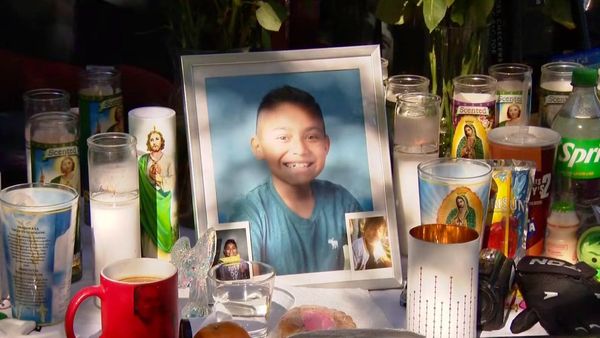Has Hollywood turned a corner in its crawl towards gender equality? Squint at the numbers, and you could easily convince yourself this is the case. Last year marked the first time that more than half (54 per cent) of the films in the box office top 100 featured female leads or co-leads. This year, too, has seen a bunch of female-fronted hits – from Marvel’s Thunderbolts*, to Lilo & Stitch, to last week’s Jurassic World Rebirth, starring Scarlett Johansson. Meanwhile, at the time of writing, the Netflix charts are topped by The Old Guard 2, a stunt-filled action sequel pitting Charlize Theron against Uma Thurman.
Theron is probably as well positioned as anyone to speak on the current state of blockbuster cinema: over the past two decades, the South African actor has established herself as one of Hollywood’s foremost action stars, via projects such as Mad Max: Fury Road, Atomic Blonde, and the Fast and Furious franchise. Speaking to The New York Times a few days ago, however, she was sceptical about the current gender imbalance in the film industry, explaining that it was still “harder” for women-fronted films to get made. “Action films with female leads don’t get greenlit as much as the ones with male leads,” said Theron. “The thing that always frustrates me is the fact that guys will get a free ride. When women do this and the movie maybe doesn’t hit fully, they don’t necessarily get the chance again.”
Theron’s remarks are telling when it comes to the subtler systems of sexism underpinning the modern studio mentality. The broad statistics might trend towards progress, but the devil’s in the details: look at the types of films that populate the upper tiers of the box office charts – and the roles within them – and the picture starts to look a lot murkier. For male-led action blockbusters, it’s sequels that reign supreme: last year, the big hitters included Deadpool & Wolverine (Ryan Reynolds’s third Deadpool movie), Venom: The Last Dance (Tom Hardy’s third Venom film), and Bad Boys: Ride or Die (Will Smith and Martin Lawrence’s fourth outing). This year, we’ve already had Mission: Impossible – The Final Reckoning (mission number eight for Tom Cruise), and Captain America: Brave New World (the fourth Captain America film). I could go on – other 2025 examples include Karate Kid: Legends, and 28 Years Later. All of these are continuations of multi-film franchises, all fronted by men.
For female stars, it’s an entirely different story. Firstly, it’s clear that women are less utilised when it comes to the action genre in general – many of the highest-grossing female-fronted blockbusters in the past year have been animated children’s films (last year, Inside Out 2 and Moana 2 both made the top 3), musicals (Wicked), or live-action Disney remakes (Lilo & Stitch has made nearly $1bn). If we look at those women-led projects that do fit within the action genre, it’s a starkly different picture to the men. In terms of original films – prospective franchise starters, as it were – last year was defined by high-profile misfires: migrainous spy caper Argylle, starring Bryce Dallas Howard, for instance, or the Dakota Johnson-fronted superhero catastrophe Madame Web.
When female actors do front high-profile blockbuster sequels, it is often the follow-up to a film they were not involved in. Think last year’s Furiosa: A Mad Max Saga, an impeccably made prequel to Fury Road, which saw Anya Taylor-Joy play the character made famous by Theron. Furiosa was seen as a flop, and hopes for a sequel remain dubious. This year’s Ballerina threw Ana de Armas into a John Wick spinoff: another box office bomb, and more gloomy sequel prospects.
Twisters and Alien: Romulus both performed well, with female actors (Daisy Edgar-Jones and Cailee Spaeny respectively) stepping into pre-existing franchises. It’s a similar deal with Rebecca Hall in Godzilla x Kong: The New Empire, or Johansson in Jurassic World Rebirth. It’s not that women are not allowed to lead individual franchise films – they are – but they are so seldom given the opportunity to become the lasting face of them. The paths to stardom that helped make actors such as Cruise or Reynolds into household names are almost totally sealed shut.
There is, of course, no quick fix for all of this. The perceived “risk factor” in female-led action movies has only intensified the scrutiny surrounding projects such as Furiosa or Ballerina, amplifying negative headlines about box office totals that were, in the scheme of things, pretty reasonable. Being a straight-to-Netflix release, The Old Guard 2 is somewhat insulated from the studio system’s fixation with the box office bottom line, but Theron nevertheless said the cast and crew “were very aware that eyes were on us”. A film like this is “not a risk that studios want to take”, she added, “but they’ll take it many times on the same guy who might have a string of action movies that did not do so well”.
If Theron’s words ring depressingly true, then there is at least some solace to be taken in the fact that she’s acknowledging it. There is no longer room for complacency, for the ambiently accepted notion that we are marching towards a future that is fair and inclusive. If things are to change, they need to be fought for – and that includes action movies.







